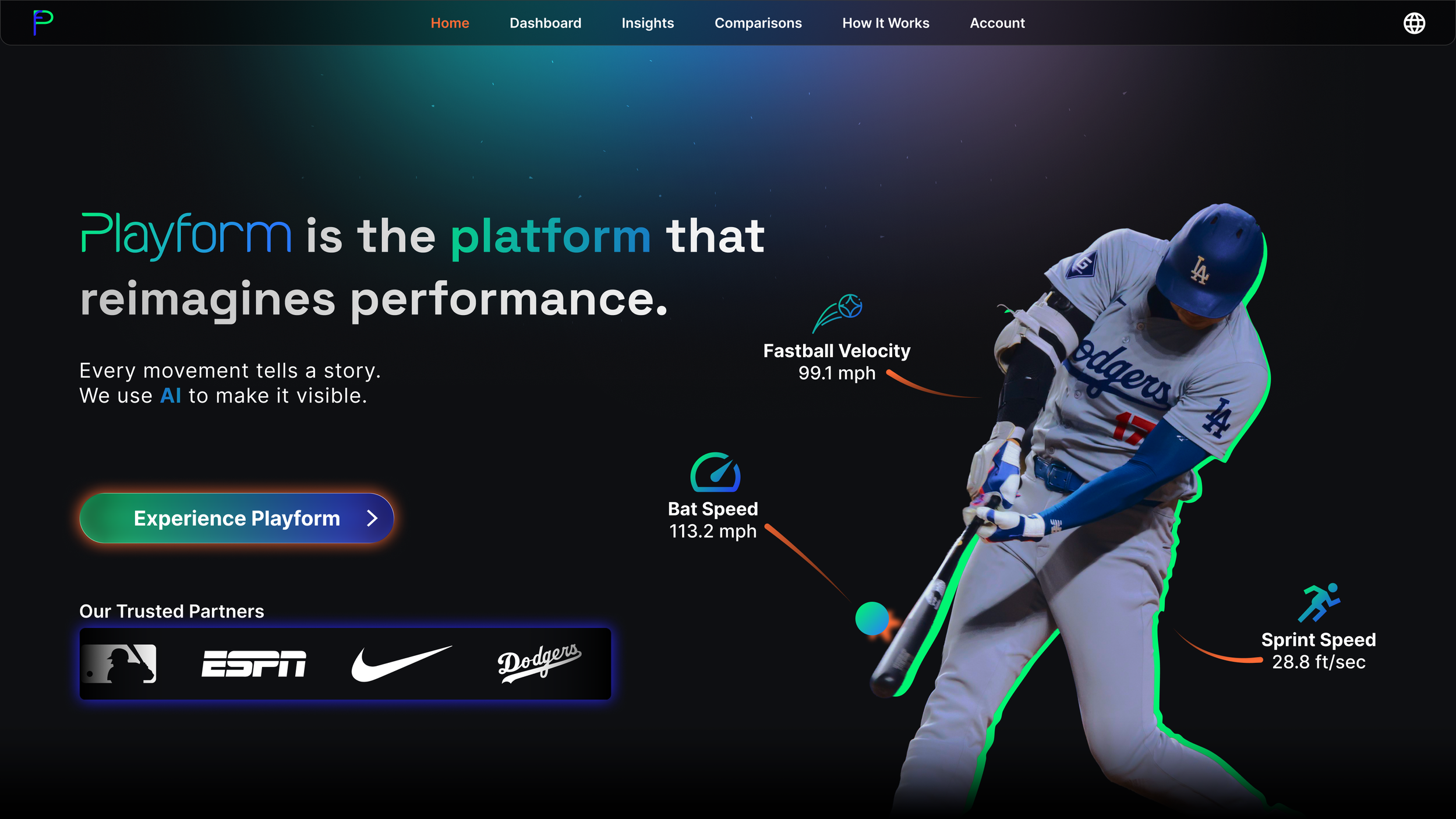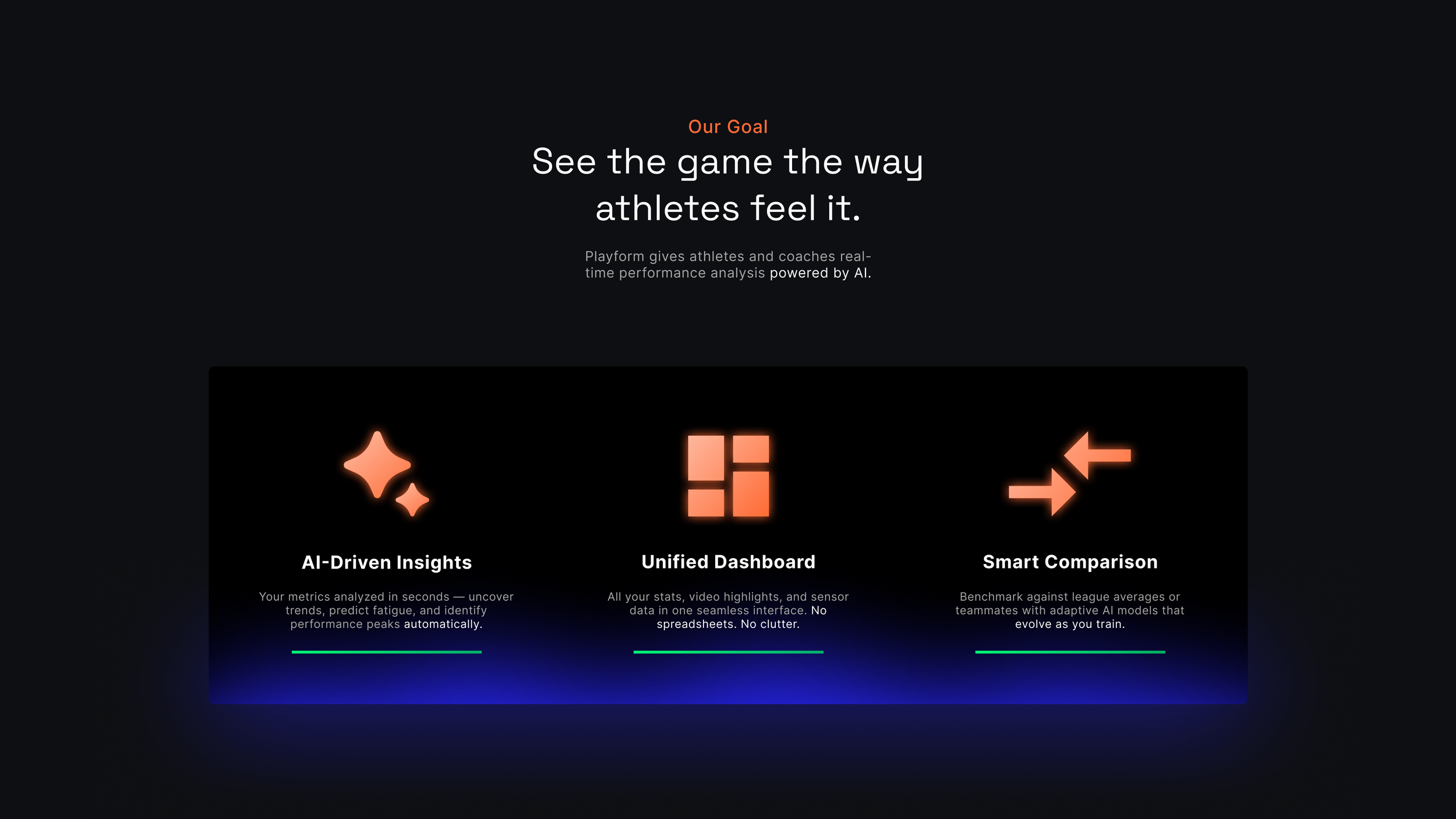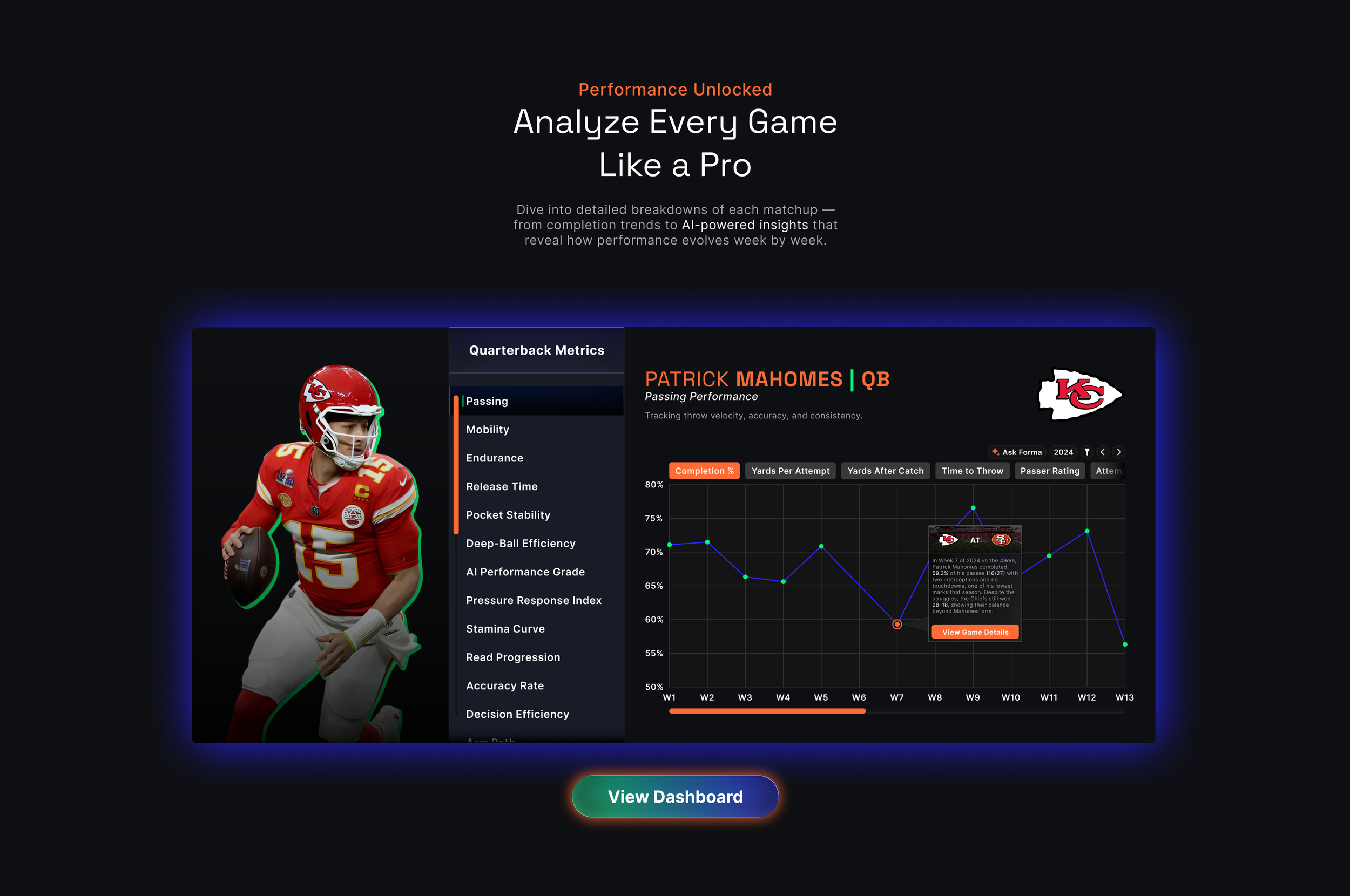Playform
Data means little without context. Playform turns raw sports performance into clear, visual stories that help fans and analysts understand the game beyond the box score.
1
2
3
4
5
6
Introduction
Problems
User Persona
UI Design
Prototype
Results
The users
Playform is designed for fans, analysts, and sports enthusiasts who want more than surface-level stats. They’re curious about the why behind performance—what makes athletes excel, how form changes over time, and how data can tell a story. These users crave clarity and visual engagement over spreadsheets and jargon.
The product
Playform is an AI-powered sports analytics platform that translates raw performance data into visual insights. It combines motion analysis, performance tracking, and storytelling design to help users interact with the game on a deeper level. The platform blends clean data visualization with intuitive UX—making complex analytics approachable and exciting.
The goal
Bridge the gap between data and understanding in sports.
Playform aims to make analytics approachable, insightful, and emotionally engaging for every fan. Instead of showing statistics that require interpretation, Playform visualizes performance in ways that highlight story, growth, and momentum. The goal is to transform how people interact with sports data, turning passive observation into active comprehension.
The problems
Sports analytics have advanced rapidly, but comprehension has not kept up. A comprehensive review by Perin et al. (2018) found that while sports data has become increasingly detailed, most visualizations still fail to make performance insights clear or accessible to non-experts. This gap leaves fans overwhelmed by numbers instead of engaged by meaning.
Building on that, Lin et al. (2022) demonstrated that embedding interactive visualizations directly into live basketball broadcasts improved fan understanding of performance data and overall engagement. Their findings show that fans respond best when information is presented in context, within the flow of the game rather than as abstract statistics.
Finally, a 2024 study by Liu et al. (2024) on data storytelling found that integrating narrative elements into data visualization improves comprehension and retention. This supports Playform’s core idea that analytics should tell a story, not just report numbers.
The solution
Transform complex performance data into stories that anyone can follow.
Playform uses interactive visualizations to translate raw statistics into clear, meaningful insights that reveal patterns, comparisons, and key moments. The platform focuses on clarity and emotion, helping users connect to the human side of performance rather than getting lost in numbers.
Perin, C., Vuillemot, R., & Stolper, C. D. (2018). State of the art of sports data visualization. Computer Graphics Forum, 37(3), 663–686. https://doi.org/10.1111/cgf.13447
Lin, T., Yu, L., Xiong, C., & Wang, Y. (2022). The Quest for Omnioculars: Embedded Visualization for Augmenting Basketball Game Viewing Experiences. arXiv preprint arXiv:2209.00202. https://arxiv.org/abs/2209.00202
Liu, Z., Li, J., & Chen, X. (2024). Data storytelling in data visualization: Does it enhance the efficiency and effectiveness of comprehension tasks? Proceedings of the 2024 ACM CHI Conference on Human Factors in Computing Systems. https://doi.org/10.1145/3613904.3643022
Introduction
Problems
User Persona
Understanding our audience
To design meaningful insights for sports fans, I defined a target user who represents Playform’s core audience — someone who loves the game but craves deeper understanding.
Jordan Alvarez
26 | Sports Content Creator | Austin, TX
Jordan runs a small sports content channel focused on athlete analysis and storytelling. He wants fast, visual ways to explore data and uncover insights that go beyond highlight reels.
Goals:
Find clear, reliable player analytics
Compare athletes without switching between platforms
Create shareable data-driven content
Frustrations:
Data is scattered across sites and apps
Existing analytics tools are too complex
Hard to find communities that value both stats and storylines
“I don’t just want to watch the game — I want to understand it.”
Playform helps by:
Centralizing athlete data, simplifying analytics, and turning insights into visual stories for fans and creators alike.
Hi-Fi mockups
This stage turned my research findings into a fully realized product experience. The high-fidelity prototype addresses the key problems identified earlier by making analytics simple to read, integrating storytelling into data visualization, and using color and motion to keep users emotionally engaged.
Every screen was built around the goal of helping fans and analysts move from confusion to clarity, creating a platform that feels both intelligent and human.
UI Design
Prototype
Prototyping a Smarter Sports Experience
This prototype translates Playform’s research into interactive flows that bring fan engagement to life. Each screen balances clean data visuals with simple navigation, letting users explore athletes, compare trends, and uncover deeper insights with ease.









